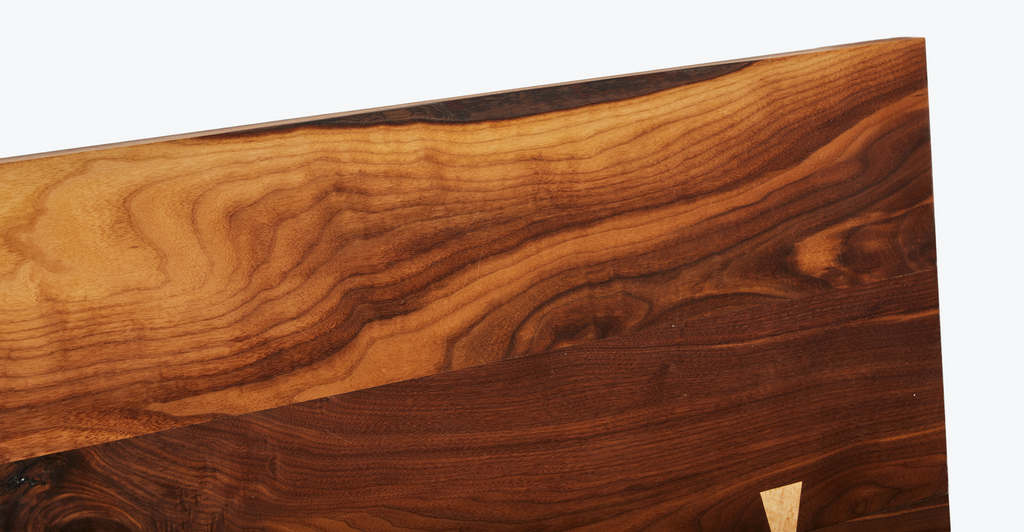Tightrope’s Co-Founder Victoria is here to answer all of your questions!
- - -
- - -
There are many reasons to choose a non-toxic, eco-friendly wood finishes. They give wood a natural look, they are easy to apply, they last longer and they are much safer than their toxic counterparts. These finishes are also biodegradable!
What makes a finish toxic vs non-toxic?
Non-toxic finishes describe any finish that contains no hazardous chemicals and very low VOCs.
Back up, what are VOCs?
VOCs stand for Volatile Organic Compounds. This term is used to describe any organic compound that causes harm to your health. These compounds can enter your bloodstream through inhalation, direct contact or ingestion. VOCs can even cause serious damage to the nervous system (including your brain!). The Material Safety Data Sheets or MSDS’s are a helpful resource. Many finishes including paints will provide a Safety Data Sheet, such as Minwax Tung Oil.



What are the most common eco-friendly finishes?
The most common non-toxic, eco-friendly finishes include waxes, oils, and shellac. For waxes, beeswax and carnauba wax are standard go-to’s for woodworkers. They are the easiest to apply, and beeswax smells great! For oils, there’s mineral oil, tung oil, and danish oil to name a few. Tung oil is our standard finish at Tightrope. It gives the wood a natural look, it can be built up in layers, and it applies very evenly. Both waxes and oils require more curing time and buffing in between than the last non-toxic finish, shellac. Shellac is made from resin secreted by female lac bugs. It starts in a flake form, but some come pre-mixed in alcohol. This finish will build layers and cure quickly, however the final coat application can be tricky since it will show imperfections and brush strokes.
Is a non-toxic finish also food-grade?
Any finish that is “non-toxic” is technically safe to use for food preparation. However we like to give extra consideration to our cutting boards and other food related pieces. Our favorite is food grade mineral oil. I really like this finish because not only is it a standard among woodworkers, it’s easy to reapply as your cutting board dries out over time.
How do you maintain a non-toxic finish?
Not all non-toxic finishes can be maintained the same way. All can handle dusting and wipe downs. Due to the nature of non-toxic finishes, it may be difficult to get rid of water rings. I always recommend protecting your wood by using coasters and placemats, especially with any hot drinks or plates. If you are using a cleaner for the first time, try using it on a spot no one will see to test it on the finish. For our food grade finish on your cutting board, I recommend rinsing with water and using a solution of white vinegar, lemon, and water to disinfect if necessary. Reapplying mineral oil to your board every three to six months is highly recommended!

How do I get a stain out from my wood?
Oh no! Depending on the severity of the stain, there’s a few solutions. If the stain doesn’t penetrate past the finish, it can be buffed out using steel wool, scotch-brite pad, or 200+ grit sandpaper (remember to sand with the grain!). You can then reapply the finish to bring the piece back to its former luster. Or you can use the solvent for the finish to remove the discoloration. For tung oil, the solvent is mineral spirits, and for wax, it’s soap and water. Reapplication of the finish may be necessary. If the stain has penetrated the wood, more work is required to remove it. This will require sanding the surface down more significantly before refinishing the piece.
That seems like a lot of work. Why should I choose a non-toxic finish again?
I can understand these finishes may require more attention and care, but the benefits outweigh the inconveniences. Compared to toxic finishes, non-toxic finishes can be reapplied right at home, and they don’t require additional toxic chemicals to remove or refinish. Non-toxic finishes also mean less harm to the person using them and creates biodegradable waste, unlike toxic finishes. Our environment is in trouble, and using non-toxic finishes are just one step in the right direction that we can all embrace!





